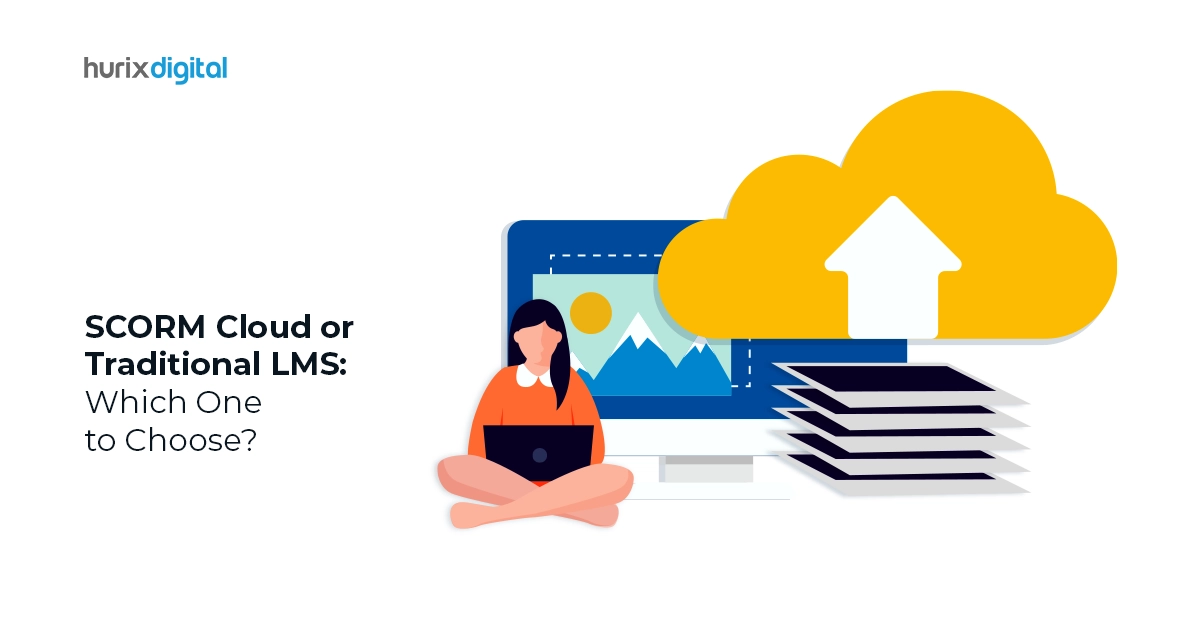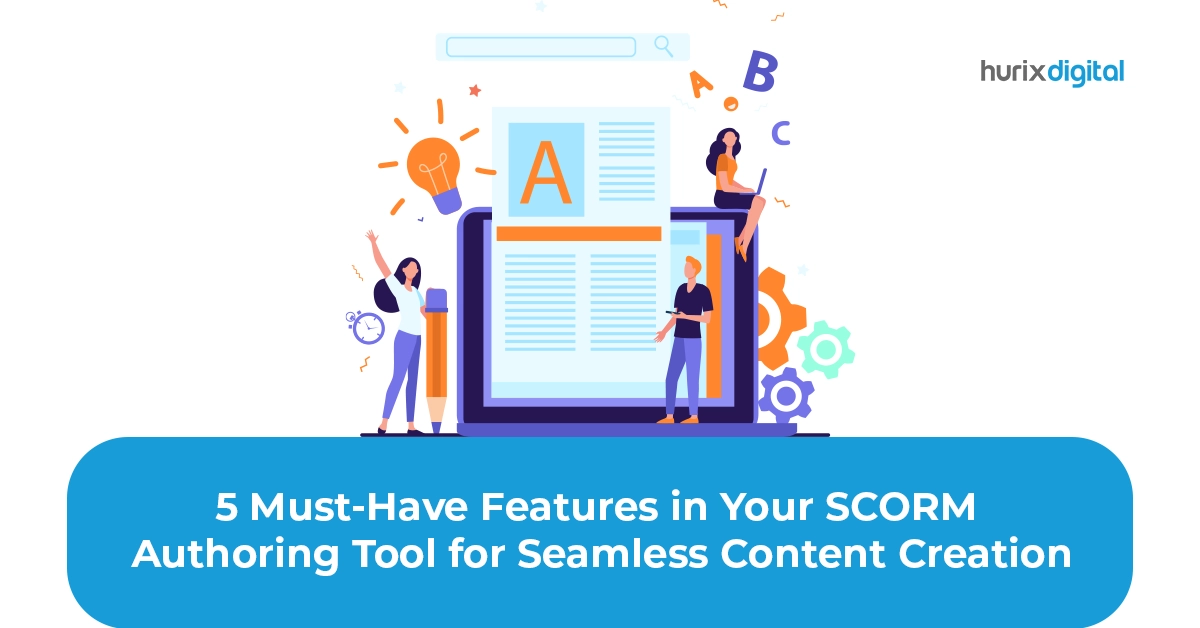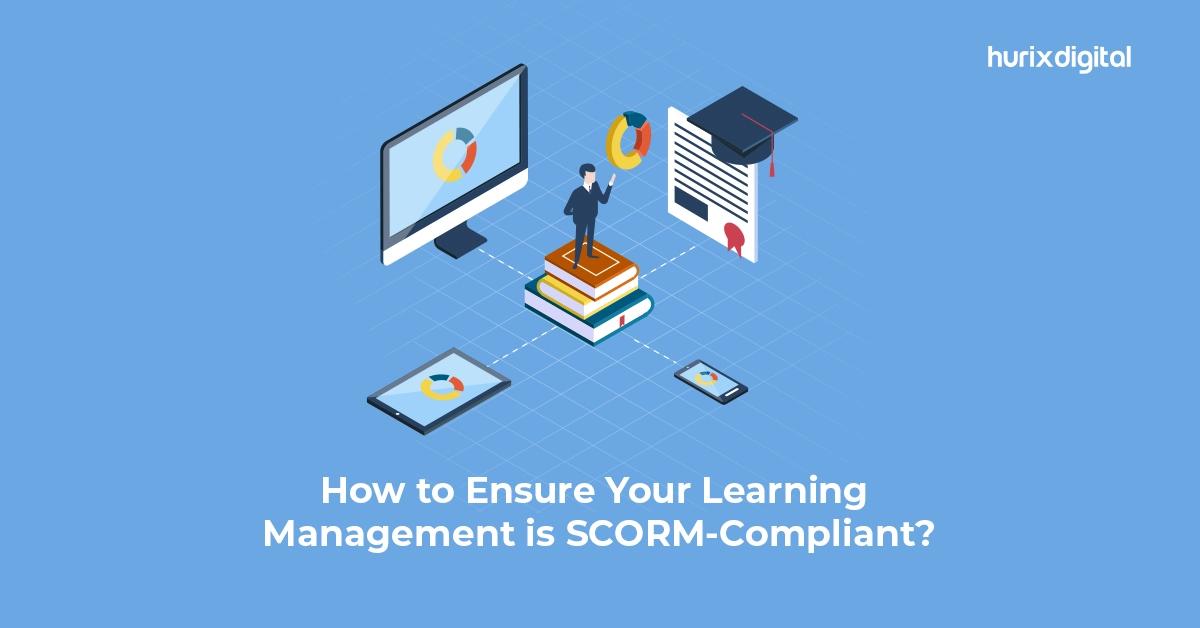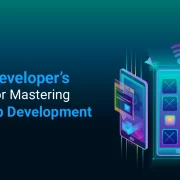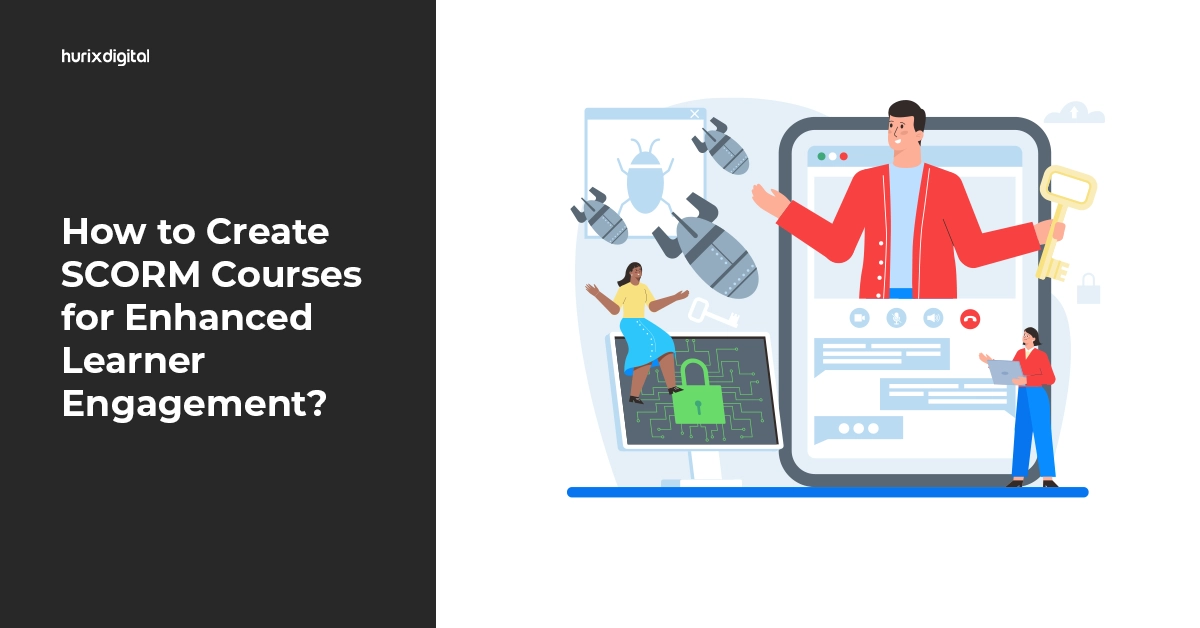
How to Create SCORM Courses for Enhanced Learner Engagement?
Summary
This article guides creating SCORM courses to enhance learner engagement. It covers best practices for designing interactive and effective SCORM-compliant content for a more engaging learning experience.
When it comes to defining the success of digital or online learning, one of the most challenging aspects is creating useful and relevant content. This is where SCORM compliance comes in.
SCORM Cloud is quite popular with instructional designers, trainers, eLearning experts, and training managers who deliver and distribute their courses in various LMSs.
SCORM allows you to create shareable content across platforms and finalize it for publishing and distribution.
Whether you are an educator, trainer, or instructional designer, this guide will give you all the important information about creating interactive SCORM courses using powerful authoring tools such as Dictera by Hurix Digital.
Table of Contents:
- What is SCORM?
- How to Choose the Appropriate Version of Scorm?
- Steps to Create SCORM Courses for Enhanced Learner Engagement
- Best Practices for Creating Effective and Interactive SCORM Courses
- Wrapping Up
What is SCORM?
A set of technical standards known as SCORM (Sharable Content Object Reference Model) makes it simple to share and reuse eLearning content across platforms and with other Learning Management Systems (LMS).
Delivering content or courses in a standardized manner across many learning management systems or platforms is the main benefit of being SCORM-compliant. It facilitates learners’ effortless access to the necessary content at any time and from any location.
SCORM is typically composed of two key components, as discussed below:
- SCO or Sharable Content Object: SCO is one of the key elements of SCORM that primarily focuses on making the contents of the SCORM-compliant package easily shareable across systems.
- Reference Model: The reference model of SCORM is nothing but a well-known industry standard in eLearning.
How to Choose the Appropriate Version of Scorm?
There are various SCORM versions available, such as 1.0, 1.1, and 1.2, and there are several things to take into account while selecting one of these versions.
Some of these factors are:
1. Functionality
This is the most important aspect to consider in this situation because different SCORM versions have distinct capabilities and functionalities. For example, compared to SCORM 2004, SCORM 1.2 offers fewer reporting features.
2. Compatibility with LMS and Authoring Tools
Another important aspect to check here is what SCORM version your LMS provider supports so that you can accordingly choose an authoring tool. This not only ensures seamless integration but also prevents compatibility issues during course deployment.
3. User Base
The best option if you want to produce content for a variety of LMSs is SCORM 1.2. It has been accessible for the longest period and is widely accepted.
Not only does it provide extensive compatibility, but it also supports a robust user base across different Learning Management Systems (LMSs).
Also Read: Does Your Learning Management System (LMS) Have These 7 Features?
Steps to Create SCORM Courses for Enhanced Learner Engagement
If you are looking for an easy and quick way to create SCORM courses and use those courses in your LMS, an authoring tool such as Dictera comes in handy.
Here are the steps you can follow to create your SCORM courses easily:
1. Choose a Content or Assessment Authoring Tool
The first step in producing learning content that complies with SCORM is selecting a reliable authoring tool, like Dictera. The program you use for this purpose should have SCORM compliance and other characteristics, like the capacity to create various media formats and easily monitor the progress of learners.
2. Create a Course Structure
The content or assessment authoring tool you choose should allow educators or training managers to organize the content easily and conveniently into a proper structure with clearly defined objectives.
3. Add Content and Various Multimedia Elements
Selecting an authoring tool that facilitates the addition of diverse media elements, including audio, video, and images, is crucial when developing SCORM courses to guarantee learner engagement and enhance the entire educational process.
This also allows users to quickly add gamified elements, quizzes, assessments, etc., and edit the content and multimedia to customize the course to their specific needs.
4. Publish the Content
It’s time to publish the content when it has been authored, or written and modified. This is where layout, formatting, and design come into play, as these components define the learner experience as a whole.
Best Practices for Creating Effective and Interactive SCORM Courses
Here are some of the best practices to ensure that the courses you create follow all LMS SCORM compliance guidelines:
1. Do Thorough Planning
Planning is the first step in developing a SCORM course that will work and boost student participation. Don’t forget to specify the target audience’s particular requirements as well as the desired learner outcomes and learning objectives.
In addition, the course’s target audience and structure — which entails arranging the course material logically and systematically — must be considered when developing a SCORM LMS course.
2. Break the Content into Small Bite-Size Modules
Microlearning, or bite-sized content, is a fantastic approach to guaranteeing more learner engagement during eLearning. By removing online learning’s distractions, content fragmentation into manageable modules or 5- to 6-minute segments aids in maintaining learners’ attention.
Likewise, creating small chunk-sized and easy-to-consume modules with various multimedia formats allows learners to grasp information easily and stay engaged in a course.
3. Use Multimedia Wisely
Using different types of multimedia in courses, such as videos, GIFs, and images, can help make the learning experience much more engaging and interactive.
Another benefit of using these multimedia elements in self-paced SCORM-compliant courses is higher retention rates from learners.
Here are some types of multimedia to consider:
- Pictures and images such as charts, diagrams, and infographics
- Videos, including instructional videos, demonstrations, etc
- Audios such as podcasts, voiceovers, and music
- Interactive elements such as surveys, quizzes, and presentations
- Animation such as interactive simulations, games, and more
4. Ensure Regular Updates and Maintenance
It’s crucial to plan frequent upgrades and maintenance checks if you want your SCORM courses to remain successful over time. This includes checking the content for accuracy, making any necessary updates, and making sure it is compatible with the most recent SCORM technology and standards.
Frequent updates also facilitate the integration of learner input and enhance the usability of the course, which in turn improves overall engagement and learning objectives.
Also Read: How to Create a SCORM-Compliant Course on a Budget?
Wrapping Up
Creating effective and highly engaging SCORM courses is essential for eLearning, as it allows educators and training managers to ensure consistency in content. Further, it also prevents the need to recreate content if learning management systems change.
We have described the steps involved in developing a successful SCORM course in this post: first, identify the learning objectives and target audience; next, select a reliable authoring tool, such as Dictera.
You may guarantee the creation of efficient SCORM-compliant courses that satisfy the particular requirements of your organizations and target audiences by adhering to the above-mentioned stages and best practices.
Educators and training managers can work together to easily generate high-quality exams for organizations and educational institutions with Dictera by Hurix Digital, an AI-powered SCORM authoring tool.
Connect with us now to learn more about Dictera!

Currently, Serving as the Vice President of Technology and Principal architect at HurixDigital, a leader in edTech world. With 25 years of IT Services experience, I specialize in EdTech and various domains, focusing on digital transformations, integration, and AI/ML in education. My expertise drives innovative solutions and operational efficiency, leveraging cutting-edge technologies to meet industry needs.
